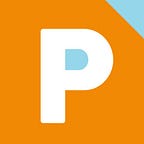Time for TikTok in Pharma?
Over the past year, TikTok has become a big part of popular culture and politics. And it’s not just teenagers who are driving this trend. In fact, TikTok was the most downloaded app in 2020. The influence of TikTok on the social media landscape can’t be ignored. Reaching consumers where they spend time online is a staple of digital marketing. But before exploring TikTok for your brand, it’s important to understand the nuances of the app. How does it compare to other social media platforms? How is healthcare content being consumed?
What’s Unique About TikTok
TikTok is classified as a video sharing app, but its user experience and value proposition are distinct from other social media platforms. Instead of a newsfeed, users see videos on their FYP (for you page). The app uses an algorithm that curates content based on users’ actual viewing habits, not just their social circles or defined interests. TikTok doesn’t share a lot of information about how its algorithm works, but it’s highly effective at providing users with relevant content.
TikTok revolves around making short videos that leverage sound clips to accompany a trend or challenge. These trends appear within users’ FYP or the Discover section of the app, which shows the most recent trends. Users make their own videos with advanced effects and filters not available on other social platforms. Unlike Instagram, TikTok encourages users to show unpolished versions of themselves, rather than a highlight reel of images. Authentic content thrives on this app. It’s a place where people feel comfortable sharing their healthcare experiences. This is often done by tapping into an existing microtrend.
How Pharma Marketers Can Take Advantage of TikTok
Conduct insight mining
TikTok doesn’t have an open API, so traditional social listening tools can’t pull posts or data from the platform. But don’t underestimate the value of searching the platform for content related to a brand or disease state. Many patients raise awareness of their condition through TikTok videos. They also share diagnosis stories. It’s possible to find how many videos used certain hashtags and how many video views exist for a certain condition. This gives us an idea of how active that patient community is on the platform and the type of content they like to interact with. For example, videos are posted daily for multiple sclerosis, cystic fibrosis, and breast cancer. Collectively, they receive millions of views.
Work with an HCP influencer
Medical professionals use the app to share health tips and educate a younger audience in a way that resonates with patients and humanizes doctors. Many HCPs jump on existing trends, adding their own medical twist. See this example of raising colorectal cancer awareness, or nurses using a dance trend to encourage handwashing. Others create educational short-form videos about their areas of expertise. For instance, COVID-19 information, why to avoid vaping, or how to establish a skincare routine. Working with an influencer to create TikTok content allows brands to reach an existing audience and leverage an HCP’s social clout without having a brand presence.
Create a challenge
With limited opportunities for pharma brands, an unbranded presence provides more flexibility and may be more achievable from a regulatory approval standpoint, since it’s largely uncharted territory within the industry. One way to do this is by creating an unbranded challenge. The challenge must be informed by a patient insight so that it truly resonates. It should encourage users to share their own videos. It should also be very native to how the platform works. Engaging with patients in the community before launch can help promote the challenge. For instance, Mucinex created a successful hashtag challenge last October with their #TooSickToBeSick campaign.
Think beyond ads
In general, there is very little paid content on TikTok. Until recently, pharma advertising was completely restricted. Even now, pharma brands are limited to video feed ads that target adults. However, TikTok is still in its infancy and doesn’t entirely depend on ad revenue. Unlike many other social networks, it’s a great space to gain traction with audiences using organic content. This means it’s possible to pilot the platform without allocating media spend. In fact, TikTok’s own slogan on their business website is “Don’t Make Ads. Make TikToks.” Even paid content on the platform should fit in natively to the TikTok format.
Closing Time
TikTok users within the US don’t appear to be shying away from the app, regardless of political concerns or the potential deal with Oracle and Walmart. Monthly users are expected to grow from 65.9 million this year to 73.7 million in 2021. This rise in popularity and the increasing amount of healthcare content indicate it’s time for pharma marketers to engage with TikTok. If you’re deciding whether TikTok could play a role in your brand’s digital ecosystem, look beyond the overall demographics. Users skew under 25 years old, but over a fifth of the US population uses the app each month.
Your next step: Evaluate the presence of the disease state conversation on the app, and engage your audience with content that fits natively within the platform.
For any questions regarding TikTok for pharma, please reach out to Jynette DeMarco, Associate Director of Digital Strategy at Patients & Purpose.
